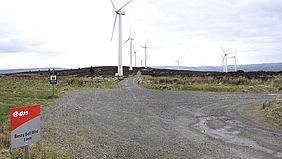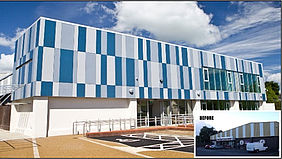During the last weeks we have virtually travelled across Västernorrland (Sweden) and Lapland (Finland) to find out more about the regional energy situation of these two SMARCTIC project partner regions. Let’s now move to the most southern part of the Northern Periphery and Arctic area to discover another partner region, Derry City & Strabane.
Located in the North Western part of Northern Ireland, this region covers an area of 1,238 km squared. The main city is Derry and the largest town, Strabane. The population of the region is listed as 150,679 (in 2018). But how do these people heat their homes?
Currently, the region is highly dependent on fossil fuels. 70% of homes in Northern Ireland are heated by oil. Nevertheless, Derry City has access to natural gas heating and parts of Strabane are starting to become connected to a new pipeline project within the town. Our SMARCTIC partner from Derry City and Strabane District Council, Heather Young, explains that across Northern Ireland 217,500 households are connected to the natural gas grid. Furthermore, electricity generation in Northern Ireland is predominantly powered by fossil fuels: 50% gas, 25% coal, 17.8% wind, 6.2% other renewables and 1% oil. In total, renewables account for 24% (data from 2016).
According to Heather, across Derry City & Strabane region there are 97 renewable sites with a capacity of 304 MW and a generation output of 714,676 MWH, and this accounts for 31% of total renewable generation in Northern Ireland.
Is fuel poverty an issue in this region? Our partners remind that in a study by the Northern Ireland Housing Executive in 2016 it was indicated that 31% of households in the DCSDC region were affected by fuel poverty. This is one of the highest percentages in the whole of Northern Ireland!
Nevertheless, our project partners are continuously exchanging experience with other organisations across the NPA area and fruitfully working in policies and strategies to improve energy efficiency, reduce CO2 emissions and increase the use of renewable energy. As an example, did you know that SMARCTIC provides an integrated platform that allows citizens, universities, companies and public authorities to work together in their community to reduce energy usage? DCSDC is aware of the potential of our project and they complement the learnings from SMARCTIC with other initiatives. “DCSDC have been developing a North-West Regional Energy Strategy in partnership with Donegal County Council (Ireland). Their aim is to become a leader in achieving national and international climate change targets and set long term goals to become a ‘Net Zero Carbon Region’ by 2045”, continues Heather. Furthermore, other relevant strategies relate to the UK Climate Change Committee Report, which recommends the reduction of greenhouse gas emissions to ‘net zero’ by 2050.


